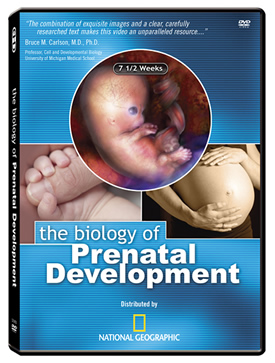Download English PDF Download Spanish PDF Download French PDF What is PDF?
Table of Contents
- THE EMBRYONIC PERIOD (THE FIRST 8 WEEKS)
-
- EMBRYONIC DEVELOPMENT: THE FIRST 4 WEEKS
-
- Chapter 3 – Fertilization
- Chapter 4 – DNA, Cell Division, and Early Pregnancy Factor (EPF)
- Chapter 5 – Early Stages (Morula and Blastocyst) and Stem Cells
- Chapter 6 – 1 to 1 1/2 Weeks: Implantation and Human Chorionic Gonadotropin (hCG)
- Chapter 7 – The Placenta and Umbilical Cord
- Chapter 8 – Nutrition and Protection
- Chapter 9 – 2 to 4 Weeks: Germ Layers and Organ Formation
- Chapter 10 – 3 to 4 Weeks: The Folding of the Embryo
- EMBRYONIC DEVELOPMENT: 4 TO 6 WEEKS
-
- Chapter 11 – 4 Weeks: Amniotic Fluid
- Chapter 12 – The Heart in Action
- Chapter 13 – Brain Growth
- Chapter 14 – Limb Buds and Skin
- Chapter 15 – 5 Weeks: Cerebral Hemispheres
- Chapter 16 – Major Airways
- Chapter 17 – Liver and Kidneys
- Chapter 18 – Yolk Sac and Germ Cells
- Chapter 19 – Hand Plates and Cartilage
- EMBRYONIC DEVELOPMENT: 6 TO 8 WEEKS
-
- Chapter 20 – 6 Weeks: Motion and Sensation
- Chapter 21 – The External Ear and Blood Cell Formation
- Chapter 22 – The Diaphragm and Intestines
- Chapter 23 – Hand Plates and Brainwaves
- Chapter 24 – Nipple Formation
- Chapter 25 – Limb Development
- Chapter 26 – 7 Weeks: Hiccups and Startle Response
- Chapter 27 – The Maturing Heart
- Chapter 28 – Ovaries and Eyes
- Chapter 29 – Fingers and Toes
- THE 8-WEEK EMBRYO
- THE FETAL PERIOD (8 WEEKS THROUGH BIRTH)
-
- Chapter 37 – 9 Weeks: Swallows, Sighs, and Stretches
- Chapter 38 – 10 Weeks: Rolls Eyes and Yawns, Fingernails & Fingerprints
- Chapter 39 – 11 Weeks: Absorbs Glucose and Water
- Chapter 40 – 3 to 4 Months (12 to 16 Weeks): Taste Buds, Jaw Motion, Rooting Reflex, Quickening
- Chapter 41 – 4 to 5 Months (16 to 20 Weeks): Stress Response, Vernix Caseosa, Circadian Rhythms
- Chapter 42 – 5 to 6 Months (20 to 24 Weeks): Responds to Sound; Hair and Skin; Age of Viability
- Chapter 43 – 6 to 7 Months (24 to 28 Weeks): Blink-Startle; Pupils Respond to Light; Smell and Taste
- Chapter 44 – 7 to 8 Months (28 to 32 Weeks): Sound Discrimination, Behavioral States
- Chapter 45 – 8 to 9 Months (32 to 36 Weeks): Alveoli Formation, Firm Grasp, Taste Preferences
- Chapter 46 – 9 Months to Birth (36 Weeks through Birth)
Embryonic Development: 4 to 6 Weeks
Chapter 11 4 Weeks: Amniotic Fluid
By 4 weeks
the clear amnion
surrounds the embryo
in a fluid-filled sac.
This sterile liquid,
called amniotic fluid,
provides the embryo
with protection from injury.
Chapter 12 The Heart in Action
The heart typically beats
about 113 times per minute.
Note how the heart changes color as blood enters and leaves its chambers with each beat.
The heart will beat approximately 54 million times before birth and over 3.2 billion times over the course of an 80-year lifespan.
Note how the heart changes color as blood enters and leaves its chambers with each beat.
The heart will beat approximately 54 million times before birth and over 3.2 billion times over the course of an 80-year lifespan.
Chapter 13 Brain Growth
Rapid brain growth is evidenced
by the changing appearance
of the forebrain,
midbrain,
and hindbrain.
Chapter 14 Limb Buds
Upper and lower limb
development begins
with the appearance
of the limb buds by 4 weeks.
The skin is transparent
at this point
because it is only
one cell thick.
As the skin thickens, it will lose this transparency, which means that we will only be able to watch internal organs develop for about another month.
As the skin thickens, it will lose this transparency, which means that we will only be able to watch internal organs develop for about another month.
Chapter 15 5 Weeks: Cerebral Hemispheres
Between 4 and 5 weeks,
the brain continues
its rapid growth
and divides
into 5 distinct sections.
The head comprises about 1/3 of the embryo's total size.
The cerebral hemispheres appear, gradually becoming the largest parts of the brain.
Functions eventually controlled by the cerebral hemispheres include thought, learning, memory, speech, vision, hearing, voluntary movement, and problem-solving.
The head comprises about 1/3 of the embryo's total size.
The cerebral hemispheres appear, gradually becoming the largest parts of the brain.
Functions eventually controlled by the cerebral hemispheres include thought, learning, memory, speech, vision, hearing, voluntary movement, and problem-solving.
Chapter 16 Major Airways
In the respiratory system,
the right and left main stem
bronchi are present
and will eventually connect
the trachea, or windpipe,
with the lungs.
Chapter 17 Liver and Kidneys
Note the massive liver
filling the abdomen
adjacent to the beating heart.
The permanent kidneys appear by 5 weeks.
The permanent kidneys appear by 5 weeks.
Chapter 18 Yolk Sac and Germ Cells
The yolk sac contains
early reproductive cells
called germ cells.
By 5 weeks
these germ cells migrate
to the reproductive organs
adjacent to the kidneys.
Chapter 19 Hand Plates and Cartilage
Also by 5 weeks,
the embryo develops
hand plates,
and cartilage formation begins
by 5 1/2 weeks.
Here we see the left hand plate and wrist at 5 weeks and 6 days.
Here we see the left hand plate and wrist at 5 weeks and 6 days.


